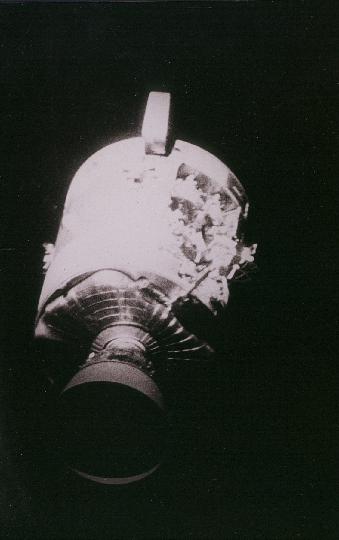During the Apollo 13 mission, after the explosion of an oxygen tank crippled the Service Module, the astronauts had to abandon the third Moon landing. The Apollo 13 crew used the Lunar Module as a lifeboat. The Lunar Module was jettisoned by the Command Module just prior to re-entry.
A team of engineers from the University of Toronto Institute for Aerospace Studies (UTIAS) played a key role in the separation of the Lunar Module and the Command Module. As the tunnel connecting the two modules was pressurized, the UTIAS team had to determine how much pressure was necessary to safely separate the modules. Not an easy task considering the fact that if there was too much air in the tunnel, the explosion that triggered the separation would have damaged the hatch of the Command Module, and the astronauts would not have survived the re-entry.
The Apollo 13 astronauts, Commander James A. Lovell, Command Module Pilot John L. Swigert, and Lunar Module Pilot Fred W. Haise, were recovered by the U.S.S. Iwo Jima in the South Pacific after splashing down on April 17, 1970.
If you are in Toronto next Tuesday, on April 13, 2010, you can meet some of the members of the UTIAS team at the Canadian Air and Space Museum. They will receive the Pioneer Award for their role in the Apollo 13 rescue.










 Subscribe to our RSS feed
Subscribe to our RSS feed











There are no comments.
Add A Comment